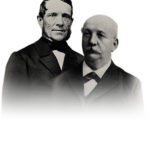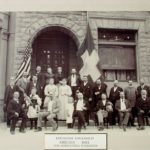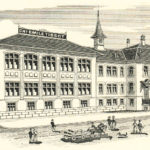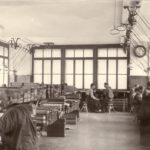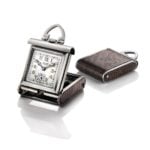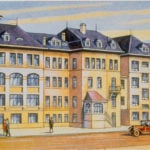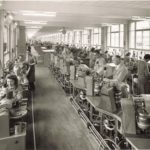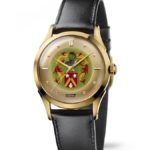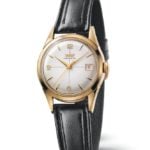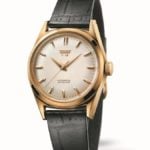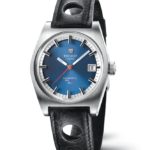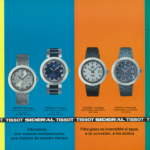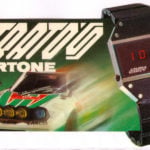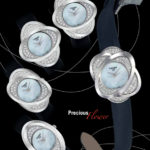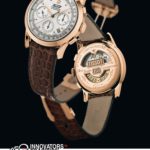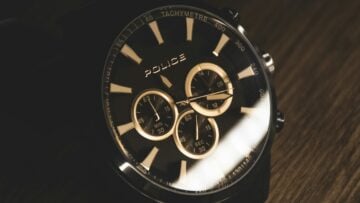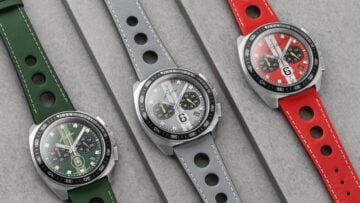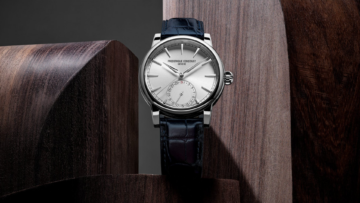Tissot is one of the biggest and most popular luxury brands that we currently stock so we thought it was about time we took a look at the Swiss watchmaking giant and how they came to be. We’re going to take a look at six key time periods where brand history was made for Tissot.
1853-1907: OUR ORIGINS
For the start of this detailed look into the heritage of Tissot watches we need to take a trip back to 1853 which was the year when Charles-Félicien Tissot who at the time was a gold case-fitter for a company in Switzerland and his son Charles-Émile who was at time time a watchmaker decided to team up and “join forces”. They came together to found what they named the “Charles-Félicien Tissot & Son” shop in Le Locle, Switzerland. This was to be a watch assembly shop which at the time was a great business to be in considering the amount of horological enterprises in Switzerland at the time and even today. They produced a catalogue which included a substantial collection of pocket watches and pendant watches, these were designed and manufactured mostly in gold and were often decorated in precious stones or materials. Some even included complications to the movements.
It was not long at all until the Tissot watches assembly shop gained recognition for its professional quality and high standards of accuracy, they were awarded salutations and recognitions at a range of national and international exhibitions. They even won awards at a number of chronometry competitions. They attended a world fair in 1900 at which the famous actress Sarah Bernhardt bought an 18 carat gold pendant watch.
Charles-Félicien Tissot and Charles-Émile aimed their watches mainly for international markets and this was something they did incredibly well. By the year 1853 Tissot watches were being sold in the United States, and by 1858 they were being sold in the Russian Empire. The Russian Empire was by far Tissot’s biggest market with their timepieces making it to the Tsar’s court. The term ‘Tsar’ was given to recognise supreme rulers and East and South Slavic Monarchs of Eastern Europe, a Tsar’s court is an old Church. Unfortunately this changed when the October revolution began in 1917 which was a hard time for Tissot watchesnot only for business but also for the family as Charles Tissot, Charles-Émile’s son, who had moved to Moscow in 1885 mainly to manage the branch his father had set up there, had gone on to marry a Russian woman.
1907-1930: THE QUEST FOR EXCELLENCE
Tissot watches was seeing huge growth and success and it was in 1907 that Charles Tissot commissioned a factory to be built on Chemin de Tourelles, in Le Locle, where the company’s current headquarters are situated. It was also during this period that the brand decided to embrace mechanical production mostly thanks to electrical motors. This really assisted the company in the serial production of meticulously-made watches. The 1910’s was a huge year for the brand and for women as this was the year that Tissot sold its first wristwatches for women, this was in the form of gold and platinum designed and manufactured pieces that had been carefully set with diamonds.
Next up for Tissot was wristwatches for men, and remember this was in the early 1900’s so this was well before the peak of this trend between world war one and two. Many of their wristwatches were influenced by current styles which included Art Nouveau as well as Art Deco, these watches often stood out because of their technical innovations. Such innovations included the world’s first non-magnetic wristwatch which was an incredible achievement not just for Tissot watches but also for the world or horology. 1917 was the year that Tissot started manufacturing its own movements which meant that it could now be referred to as a ‘manufacturing company’. This meant that they could bring costs down and to offer their customers high-quality watches at an affordable price which is something they still pride themselves on today.
1930-1953: THINKING BIG
1930 was the year in which Tissot and Omega decided to strategically merge in order to strengthen their position as well as being able to offer their customers a more fulfilled range of products. Paul Tissot decided more needed to be done so he set about establishing and launching the ‘Tissot Plan’ in 1933. This plan was both innovative and groundbreaking for its time as was aimed at strategizing marketing and coming up with a new action plan for the brand. The plan involved a number of key changes and adjustments that Tissot would implement over the coming years this included cherry picking specific models to each market area, carefully planning out their advertising campaigns both systematically and effectively in order to see more market outreach and new updated catalogues being distributed to retailers free of charge. Tissot watches even went as far as offering their customers an accidental damage guarantee which lasted for one-year which is something no brand has done before or since. This no longer is in place however at the time this really shook up the watch making world.
Tissot watches recognised that women like a variety of outfits when choosing what to wear so why would choosing a watch be any different. they focused on providing a range or extremely varied collections as well as using the slogan ‘A young woman and 3 watches’ in their advertising to female audiences. A good example of this was their leather strap models were suited for physical activity and their cord bracelet timepieces were aimed more at the professional world.
Tissot had also thought about their timepieces with gold bracelets, these were perfect for evening wear such as gowns and dresses and for their male audiences they introduced chronographs and automatic movements such as the Tissot Navigator which was such an iconic model.
1953-1968: “100 YEARS OF GENIUS AT WORK”
What a big year this was for Tissot, the brand celebrated its 100th birthday in 1953. It was also the year that Edouard-Louis Tissot took on the role of managing director for Tissot, this marked a turning point for Tissot as its industrial organisation really took off this was partly thanks to the “single calibre” principle which was introduced in 1958, the range of movements that Tissot was producing was reduced. These changes allowed the brand to offer different complications to their basic movement which was a huge success, this was further amplified when the brand had a visit from the prince and princess of Monaco.
1968-1983: “A WAVE OF YOUTH”
This was widely known as the baby-boom generation, the 1960’s and 70’s saw youth become its own age group which in turn came with a youth culture and expression. This newly emerging age group meant that for the first time Tissot decided to design and manufacture timepiece aimed purely at teenagers. This collection including models with both original and chic characteristics, the brand also looked at the possibility of using new materials that were becoming available and were yet to be used in watchmaking such as fibreglass and other synthetic materials. This also allowed the brand to experiment with colours and gradients more. The baby boom also saw a rise in Quartz collections, the cause of this is not specifically known however it may have been the price point of the quartz models which were more affordable for the younger generations. Tissot and the world of Formula 1 also joined together in 1976 when the brand partnered with teams such as Ensign, Renault and Lotus as well as taking on ambassadors who were renowned racers on the international circuit such as Jacky Ickx, Clay Regazzoni, and Mario Andretti.
1983-2017: AT THE TIME OF THE SWATCH GROUP
In 1983 the brand became entangled in the watchmaking crisis which was affecting almost ever brand in the industry, Nicolas G. Hayek confronted this head on and put the idea forward for a merger. He is mentioned in Forbes as the man who saved the Swiss Watch industry. This consisted of the both Tissot and SMH which were two of the biggest groups at the time merging together and renaming to “The Swatch Group“, this became official in 1998. In a bid to reinvent themselves the Swiss watch brand created iconic watches such as the RockWatch which was the first watch made of natural stone as well as The WoodWatch and the PearlWatch which followed shortly after. These new concepts attracted a lot of new business as these had never been seen before.
Tissot watches created the T-Collection towards the end of the 1990’s which was a much more feminine collection but it also put more emphasis onto sporty timepieces as the features for these became increasingly advanced. The digital world was evolving at a very fast pace and this was something Tissot watches wanted to embrace, they did this by creating the Tissot T-Touch in 1999 which was the first tactile timepiece in the world. In 2014 they pushed even further when they announced the incredible T-Touch Expert Solar which was solar powered version of the T-Touch, this was another world-first.
Tissot watches has always been a brand that holds their slogan very close to everything they do “Innovators by tradition”. Since 1996 the Tissot brand has been lead by François Thiébaud, its thanks to him that this Swiss watch brand born out of Le Locle manages to sell over four million timepieces worldwide every single year.


